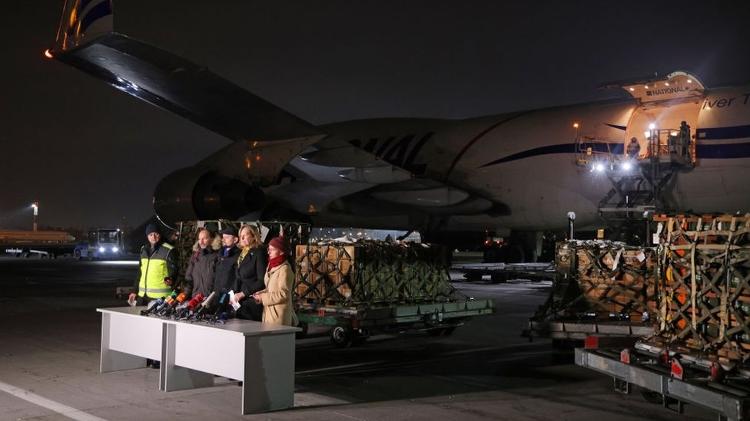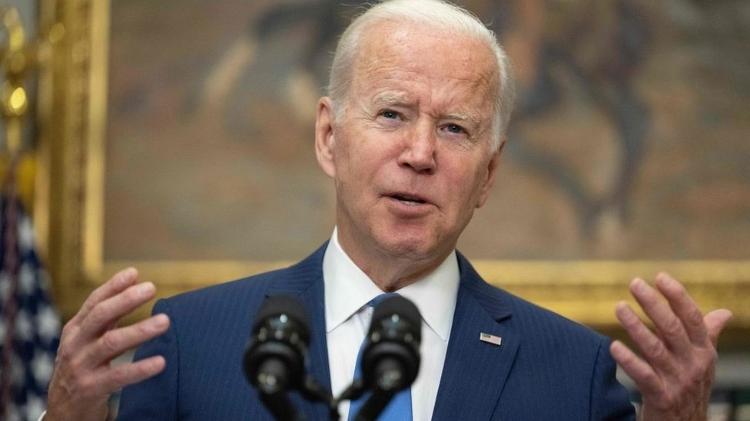They were the “hot wars” of the “Cold War”.
For a little over four decades, the Soviet Union and the United States have competed aggressively for spheres of influence around the world, never encountering each other in armed conflict. This is not to say that there were no wars between them during this nearly half-century – but they did take place, in all their cruelty and destruction, elsewhere and through other actors.
These were the so-called “proxy wars” or proxy wars.
Last week, Russian Foreign Minister Sergey Lavrov accused the Western military alliance NATO (North Atlantic Treaty Organization) of waging such a war against Moscow.
Lavrov warned that advanced weapons supplied by the West to the Ukrainian government would be a legitimate target for Russian forces conducting a “special military operation” that Moscow is using to invade Ukraine.
“Warehouses in western Ukraine have been attacked more than once [por forças russas]. How could it be otherwise? In essence, NATO is entering a war with Russia through a (third-party) proxy and is arming that proxy. “War is war,” the Russian chancellor said in an interview with television channels.
But what exactly is a “proxy war” and what does it mean for Russia to accuse NATO of waging war?
indirect conflict
“A proxy war occurs when a state is at war with another state, but uses the forces of another state instead of using its own military forces — it could be another state, a militia, or warlords,” says foreign policy professor Daniel Byman. He is a senior Middle East analyst at Georgetown University in Washington, USA, and the Brookings Institution for the BBC’s Spanish-language news service, BBC News Mundo.
It is worth remembering that at the height of the Cold War, such conflicts were very frequent between the USA and the Soviet Union; For example, in places like Somalia or Ethiopia each superpower to support opposing forces in a civil war. to compete through influence through these third parties.
These conflicts took place in Asia, the Middle East and Latin America as well as in Nicaragua in the 1980s.
Vladimir Rauta, professor of Politics and International Relations at the University of Reading in England, points out that these interventions can be implemented in different ways.
“This support can come through arms transfers, intelligence information or funding. The most common form of support is to provide safe zones, safe regional havens,” he told BBC News Mundo.
“A proxy war implies some or all of these forms of support, but never sends troops, because when a state sends troops, it’s a direct military intervention anyway”, Rauta said.
Lavrov’s allegation that NATO was involved in such a conflict against Russia in Ukraine was previously brought forward by Leon Panetta, the US Secretary of Defense and head of the CIA (American intelligence agency) during the Obama administration.
“Whether we like it or not, this is a proxy war with Russia,” he told the Bloomberg financial news agency in mid-March.
In an interview with BBC News Mundo, Panetta once again defended his stance against the Russian invasion of Ukraine, emphasizing the unity of the US and NATO allies.
“They (the US and its allies) are working to make Russia pay a price for this invasion. They have imposed heavy economic sanctions against Russia. They are providing the Ukrainians with weapons to help them fight the Russian invasion, and they are strengthening their NATO countries to make it clear. From Russia.” “They will resist any future invasion,” he said.
“If the United States and our allies are doing everything they can to support Ukraine in its war against Russia, we can say that it is tantamount to a proxy war.”
Panetta also draws attention to the recent statements of US Secretary of Defense Lloyd Austin, who said last week that one of the goals of this war was to see Russia weaken.
Austin’s remarks came during an interview with journalists in Poland when he was asked if Washington would define its targets differently from when the invasion began.
“We want Ukraine to remain a sovereign country, a democratic country that can protect its sovereign territory. We want to see Russia become too weak to do what it did when it invaded Ukraine,” Austin said.
After the start of the invasion of Ukraine, the United States Congress approved aid amounting to approximately US$3.5 billion (US$17.6 billion), which, according to the White House, was nearly exhausted.
Therefore, at the end of April, the Biden administration requested additional resources of US$33 billion (R$166 billion) to assist Ukraine.
Washington supplied the government of Volodymyr Zelensky with munitions and weapons of all kinds, including anti-aircraft and anti-tank systems, helicopters, drones, and grenade launchers.
According to Norwegian NATO Secretary General Jens Stoltenberg, the alliance as a whole has already allocated more than US$8 billion (R$40 billion) in military aid to Ukraine.
war and propaganda
US President Joe Biden has rejected the idea that his country or NATO is participating in a proxy war against Russia.
“This is not true and it worries me because it shows Russia’s despair over its miserable failure to do what it said it would do in the beginning. I think it reflects their failure, not the truth.” said Biden.
“Instead of saying that the Ukrainians are doing it, they (the Russians) are telling their people that the United States and all NATO are involved in the elimination of Russian troops and tanks, etc.” american president.
Byman of Georgetown University argues that Lavrov’s accusation is actually part of a Moscow propaganda effort.
“HE IS [Lavrov] trying to change the narrative. Instead of admitting that Russia, which has invaded a neighbor, is aggressor, it tries to convince Russia that it is on the defensive, that it is being attacked. And that the enemy is not Ukraine, but that NATO and the USA are targeting Russia. Because of the failures of Russian policy so far, he is just trying to find a new enemy,” says the expert.
Rauta, from the University of Reading, points out that the US and NATO support for Ukraine does not mean a proxy war, because they are states helping an attacked country.
“Lavrov is completely wrong. The United States and the European Union are giving military and economic support to Ukraine’s legitimate government. It’s perfectly legal. Allies and partners helping each other,” he states.
Byman agrees.
“Russia started this war, and NATO is only helping Ukraine defend itself. So NATO doesn’t want to fight Moscow. Actually, it’s a war started by Russia,” he says.
But citing comments from US Secretary of Defense Lloyd Austin, he warns that “the United States or other countries may have other goals than just defending Ukraine.”
Despite this, he adds, “the primary nature of this conflict is not a proxy war, but a Russian invasion of another country that defends itself with the help of other countries,” according to the expert.
Both Byman and Rauta agreed that, paradoxically, a classic example of proxy warfare is the role Moscow has played in Ukraine in recent years.
“If there is a country that is waging a proxy war in Ukraine, it is Russia, which has been supporting and promoting separatist rebels in southeast Ukraine since 2014. Moscow created this whole situation from a proxy war against Kiev,” Rauta said. .
source: Noticias


